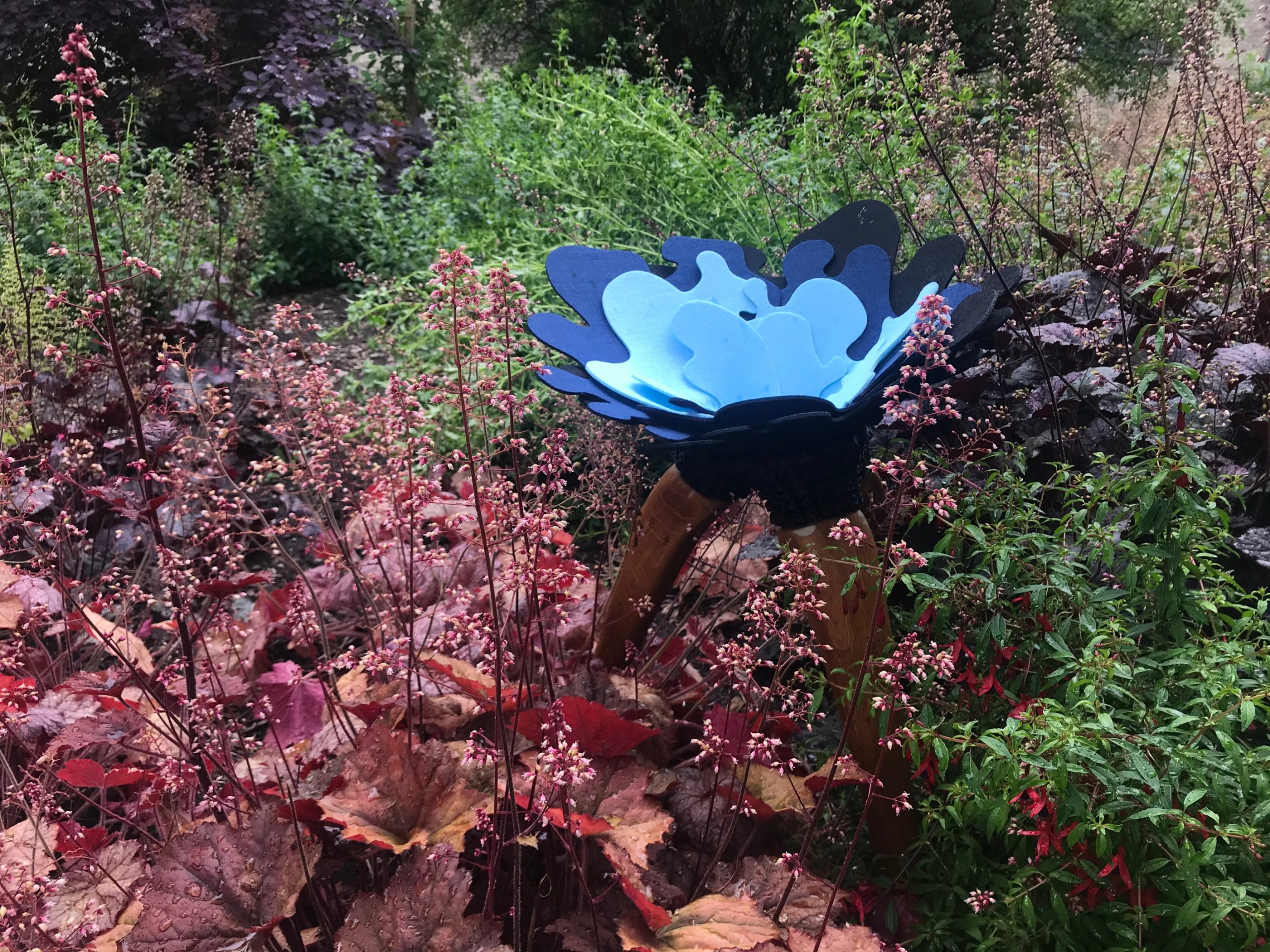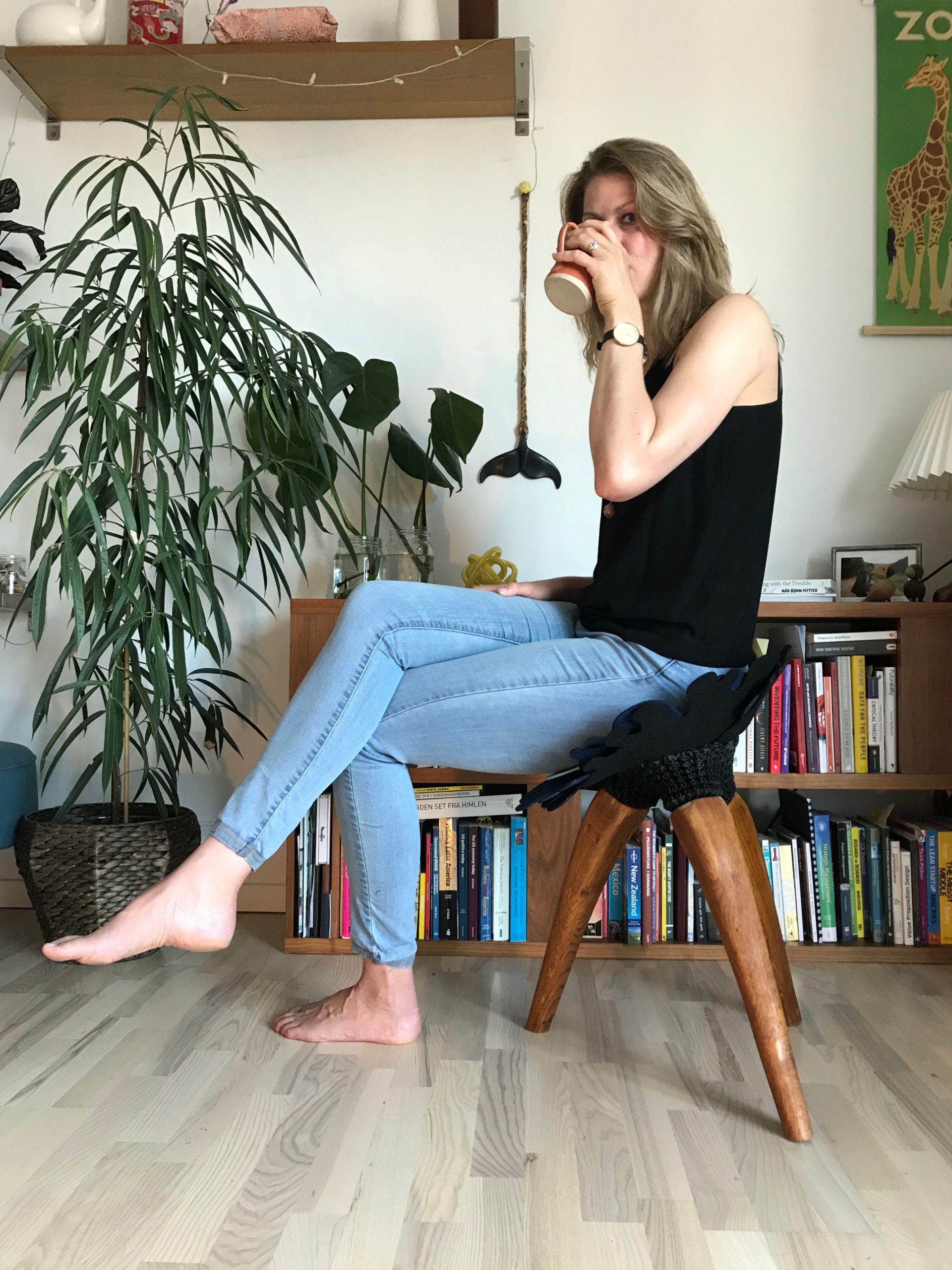Camille

Useful information
- Team members
- Antonio Esparza Karen Glismann
- Country
- Denmark
- Keywords
- 3Dprinting dido entrepreneurship string figures recycling chair flower circular economies
Short Description
Camille is an algorithm with 3DPrinting that binds entrepreneurs and recyclables to make chairs.
Detailed Description
The project is the implementation of a PhD study focused on understanding how to exploit 3DPrinting in entrepreneurial ventures (Esparza, 2020). Its implementation relies on the ability of the entrepreneur to use CAD/CAM. Camille focuses on bypassing this need by parameterizing the design process of a component in a specific case: a chair. it parametrices the interface between a tripod and a seat with minimal surfaces. The structure adapts to different shapes of leg interfaces, their angle, the mechanical performance of the filament,and the printing volume available for the entrepreneur.
The Camille workflow:
1.Source legs
2.Trace legs perimeter (now manual, automatic in development)
3.Select height
4.Select printing volume
5.Design seat
6.Let Camille work
7.3DPrint
Camille provides a space for two or more actors to co-design a small supply chain (my subproduct + Camille + your subproduct = chair). The shape of the final product is a flower that emerges from old to create new.
Project Details
- Does your design take social and cultural challenges and human wellbeing into consideration?
This project has the purpose of contextualizing 3DPrinting in the local scale of global challenges. 3DPrinting is a technology that often is related to deterministic innovation and entrepreneurship approaches. However, the flexibility available through this technology has the potential to detach its users from these narratives. With 3DPrinting, entrepreneurs are not sentenced to the practices proposed in Silicon Valley. They are free to play and create alternative ways of doing economics. Accordingly this project wants to motivate entrepreneurs to develop partnerships that matter, that care, and that create support networks between people, the environment, and design practices.
The Camille algorithm provides entrepreneurs with a digital platform to rise the complexity of their sub products without investing in product development or tooling costs. Hence, it increases the competitivity of entrepreneurs and their revenue. It allows them to focus on strategic problems and compete with large manufacturers in the same segment. Additionally it gives entrepreneurs a chance to interpret the flower locally. Different cultural interpretations can be used and manufactured globally.
- Does your design support sustainable production, embodying circular or regenerative design practices?
Camille focuses on local production. It uses 3DPrinting in a Data In Data Out model to manufacture a reliable component that otherwise would need international supply chains. It provides a model for digitally “vermicomposting” other products. Upcycling material is difficult because the supply of material is not standardized. This means that often, the design of an upcycled product is almost taylored despite competing in a market segment populated by mass manufacturing. This demotivates entrepreneurs who want to rework discarded material due to the thin return margins available for them. Moreover, it pushes entrepreneurs to compete in niche markets without complex and scalable product architectures. Camille flips this logic by adapting to the supply material without altering the design. This with the purpose of motivating entrepreneurs and designers to rework disposed material such as furniture. This adaptability allows upcycling of discarded material to be used as legs, or even as something else that exploits the same configuration to build something other than a chair. By optimizing FDM 3Dprinting available in fababs, Camille also permits the use of biodegradable or recycled filament as long as the mechanical data is available. Therefore, the algorithm proposes a pattern for different actors to engage in metaforical "composting". In such sense, it works as a string figure where human and non-human actors compost trash into new products.
- Does your design use principles of distribution and open source?
Conventional CAD/CAM is facilitated by a department of design engineering specialists. The Camille project focuses on bypassing this need for an organization by parameterizing the design process. The grasshopper algorithm uses the flexibility of 3Dprinting to make a lattice structure from minimal surfaces. Such structure provides the algorithm with a better model for analysis and FDM printing. A minimal surface enables the creation of closed toolpaths without sharp angles and with better structural performance. At the same time, it models a two dimensional surface distributed in three dimensions that can be analysed as a structure under tension. The algorithm can use the mechanical data for each filament to detect which areas are at risk of breaking and need to be reinforced. According to the results of the analysis, the algorithm adds thickness to the rings that suffer of greater displacement. The structure adapts to different shapes of leg interfaces, their angle, and the printing volume available for the entrepreneur. The resulting model provides three fixing points for the legs that can also be used to attach the seat. With the assistance of the algorithm, entrepreneurs work with data instead of managing a manufacturing organization.
Camille is designed to be a design service. It is thought to be manufactured in distributed sites such as fablabs or furniture workshops. It is conceived to be a pay as you go service where entrepreneurs submit parameters to a preliminary model to later receive a digital file ready for slicing.
- Does your design promote awareness of responsible design and consumption?
This project was born as a response to the difficulties that single and local-based entrepreneurs have when starting non-scalable design businesses such as upcycling. It has the purpose of motivating entrepreneurs and designers to create products locally and develop local supply chains that have economic and environmental benefits. The concept brings attention to the idea of making new with the resources we have. It can be uised as a case study to teach how to bypass conventional entrepreneurship with 3DPrinting.
Images



Video
Social Media Accounts
thefirmandtheproduct.wordpress.com